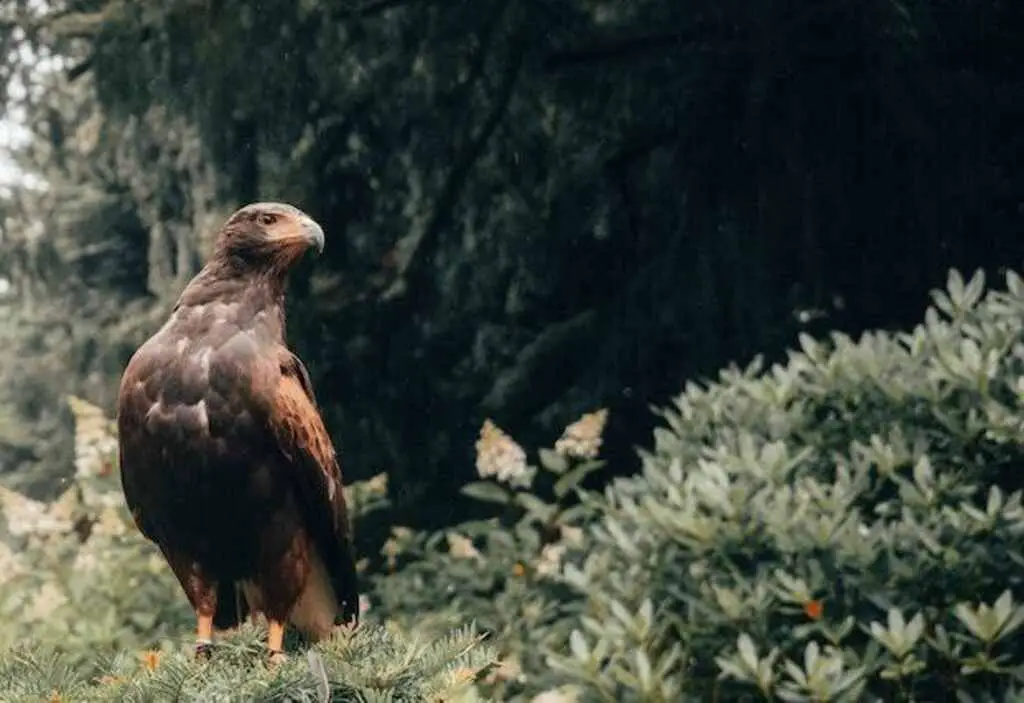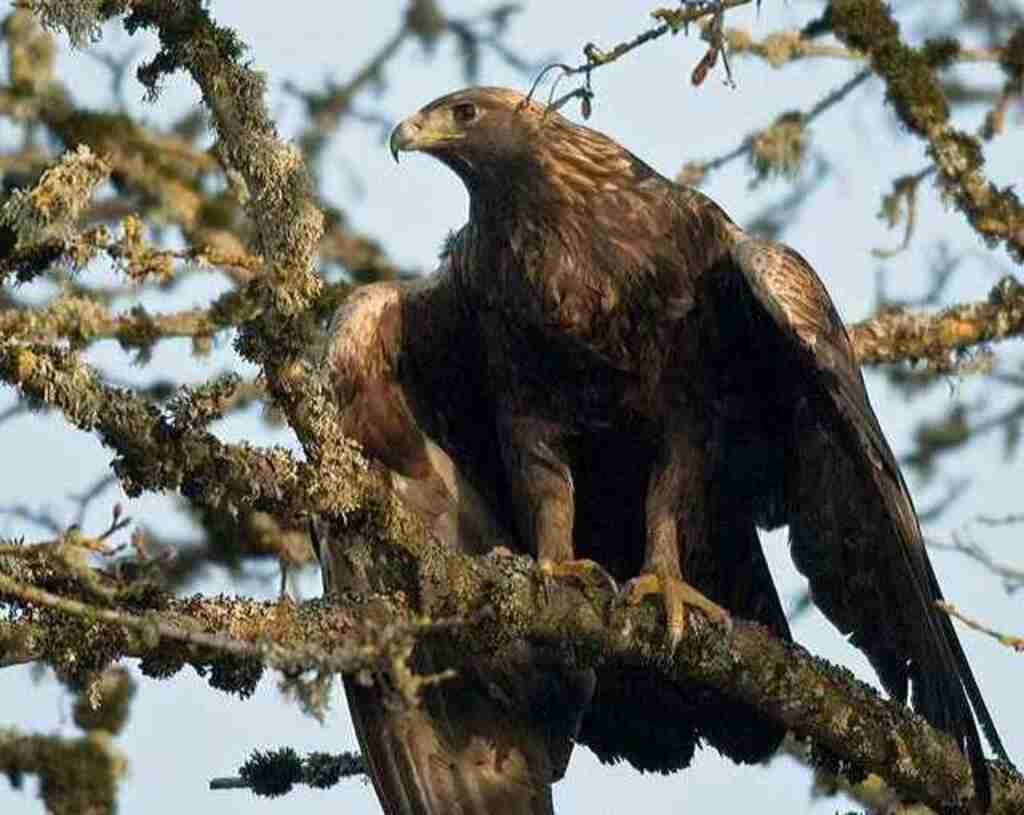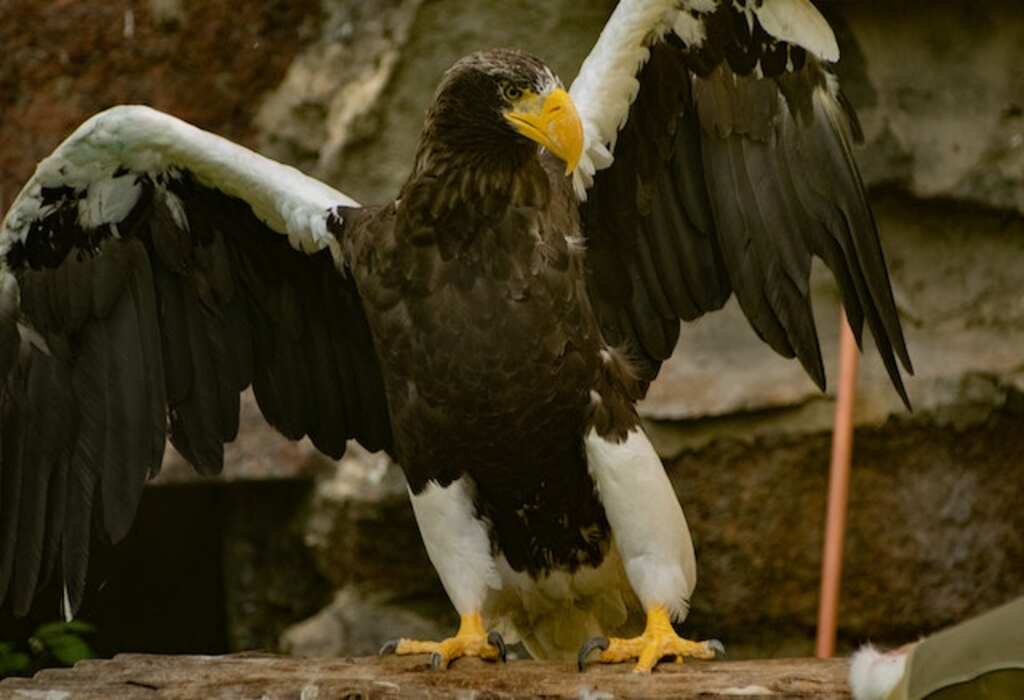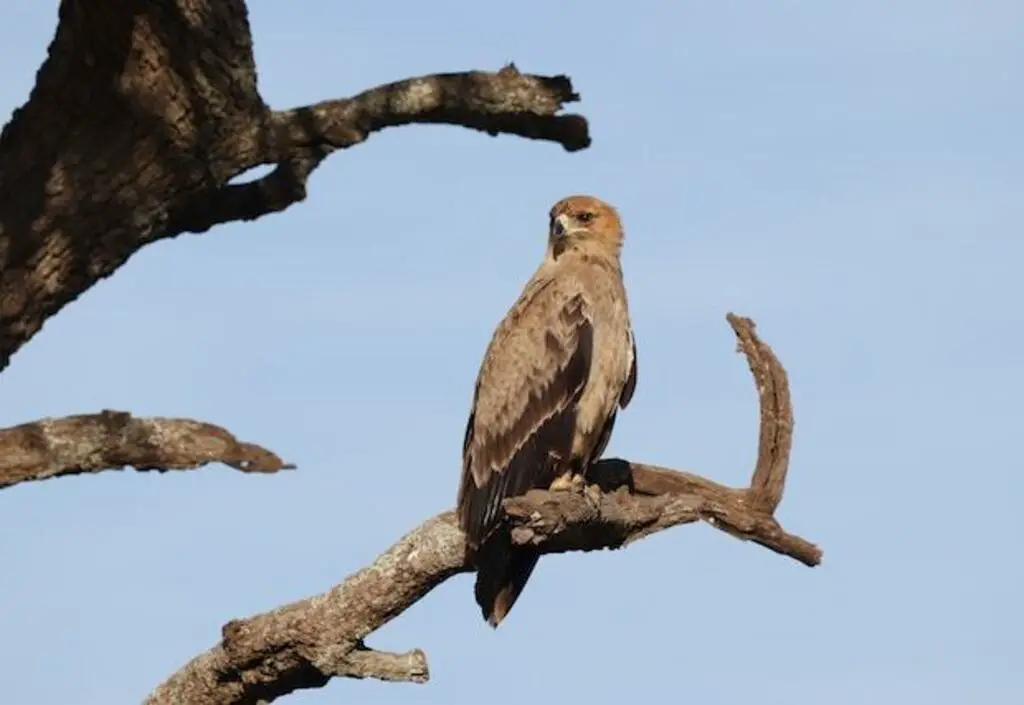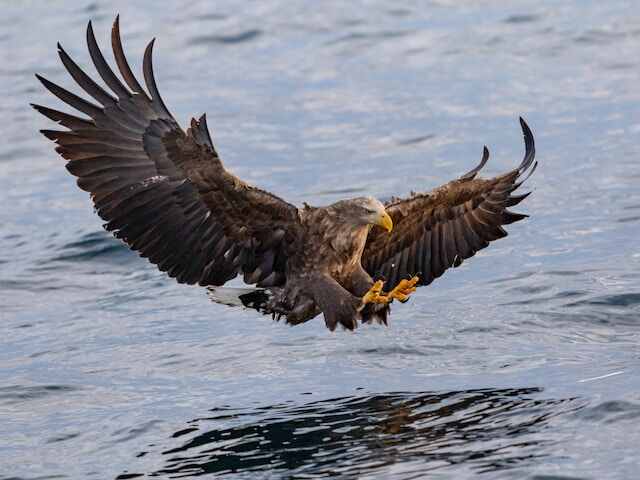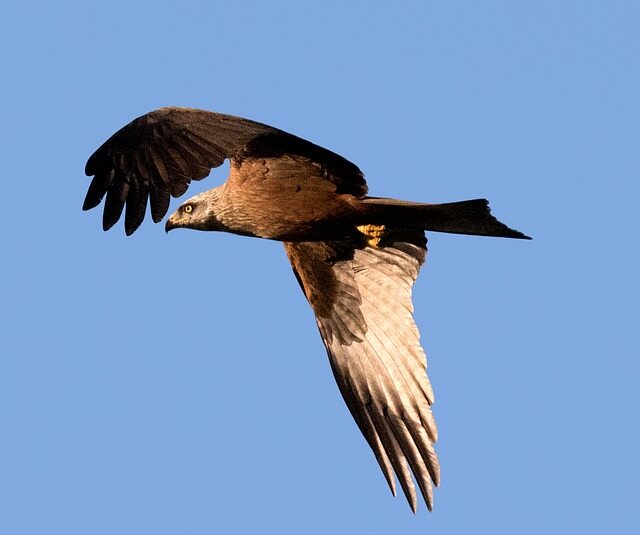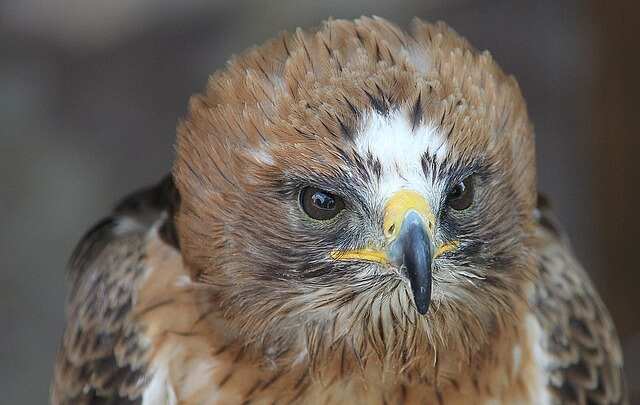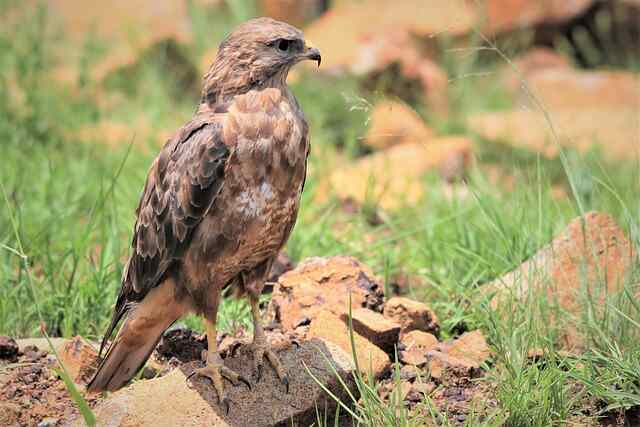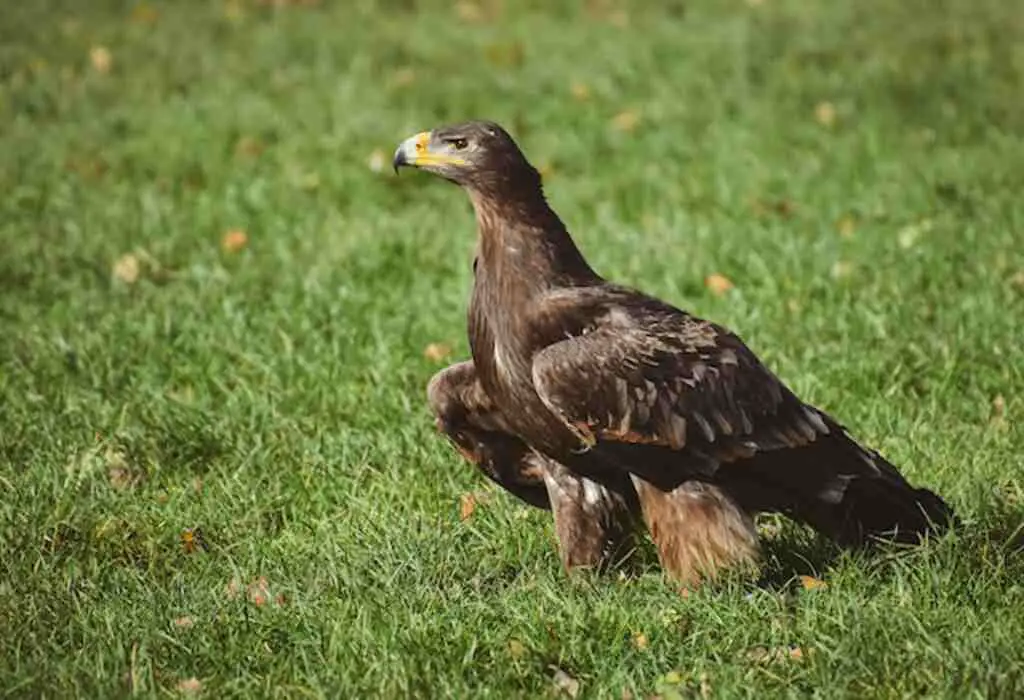Which Eagle Is Found In Russia?” If you’re picturing bears on unicycles or snow-clad eagles in fur hats, well, almost! Russia is home to majestic eagles soaring through its vast wilderness.
So, hold your nesting instincts, because we’re about to reveal the short answer! From the fierce Golden Eagles to the regal White-tailed Eagles, these awe-inspiring predators rule the Siberian skies.
Ready for an eagle-eyed adventure? Fly into this article and let the feathered facts take flight!
Table of Contents
- 1 Key Takeaways
- 2 Which Eagle Is Found In Russia
- 3 Introduction to Russian Eagle Species
- 4 The Iconic Golden Eagle
- 5 The Majestic Steller’s Sea Eagle
- 6 The Agile Steppe Eagle
- 7 The Powerful White-tailed Eagle
- 8 The Graceful Imperial Eagle
- 9 The Endangered Greater Spotted Eagle
- 10 The Elusive Booted Eagle
- 11 The Rare Eastern Imperial Eagle
- 12 The Impressive Steppe Buzzard
- 13 Conservation Efforts for Russian Eagles
- 14 Conclusion
- 15 Frequently Asked Questions
- 15.1 How many different species of eagles are found in Russia?
- 15.2 What is the average wingspan of a Golden Eagle?
- 15.3 Are Steller’s Sea Eagles native to the coastal areas of Russia?
- 15.4 How does the diet of the Steppe Eagle differ from that of the White-tailed Eagle?
- 15.5 What are the primary threats to the survival of the Eastern Imperial Eagle in Russia?
- 16 Author
Key Takeaways
- Russia is home to a variety of eagle species including the Golden Eagle, Steppe Eagle, White-tailed Eagle, Steller’s Sea Eagle, Imperial Eagle, and Greater Spotted Eagle.
- The Steppe Eagle is listed as ‘Endangered’ in Russia due to habitat loss, hunting, and pesticide use.
- The White-tailed Eagle is a coastal and inland water bird with a diverse diet including fish, waterfowl, and carrion.
- Threats to Russian eagle populations include habitat loss, illegal hunting, and poisoning, but conservation initiatives have contributed to their recovery.
Which Eagle Is Found In Russia
Russia is home to a variety of eagle species, including the Golden Eagle, Steppe Eagle, White-tailed Eagle, Steller’s Sea Eagle, Imperial Eagle, and Greater Spotted Eagle. These majestic birds play important ecological roles and are admired for their beauty and strength.
Introduction to Russian Eagle Species
Russian eagle species include the Steppe Eagle (Aquila nipalensis), Golden Eagle (Aquila chrysaetos), and White-tailed Eagle (Haliaeetus albicilla).
The Golden Eagle, scientifically known as Aquila chrysaetos, is one of the most iconic and majestic birds found in Russia. Its taxonomic classification places it in the family Accipitridae and the order Accipitriformes.
This eagle species prefers a wide range of habitats, including mountains, forests, and tundra regions. It is known for its large size, with a wingspan of up to 2.4 meters, and its golden-brown feathers.
The Golden Eagle has a diverse diet, consisting of small mammals, birds, and carrion. Threats to Russian eagle populations include habitat loss, illegal hunting, and poisoning from pesticides.
Understanding the behavior, habitat, and threats facing Russian eagle species is crucial for their conservation and protection.
Transitioning into the subsequent section, the iconic Golden Eagle has captivated researchers and enthusiasts alike with its remarkable attributes and ecological importance.
The Iconic Golden Eagle
In the vast landscapes of Russia, a majestic bird with golden plumage soars through the skies, captivating the imagination of onlookers. This bird is none other than the iconic Golden Eagle, scientifically known as Aquila chrysaetos.
Belonging to the family Accipitridae, this species is classified under the order Accipitriformes.
Golden Eagles are known for their large size, with a wingspan that can reach up to 2.3 meters, and their distinctive golden-brown feathers.
They inhabit a wide range of ecosystems, from the Arctic tundra to the mountainous regions of Russia.
With remarkable eyesight, these eagles are skilled hunters, preying on a variety of small and medium-sized mammals.
They are also known for their breeding behavior, which involves building large nests on cliffs or in trees. Golden Eagles undertake seasonal migrations, traveling long distances to reach their wintering grounds.
Despite their widespread distribution, Golden Eagles face threats such as habitat loss and hunting practices.
Conservation initiatives have been implemented to protect these magnificent birds and ensure their survival in the wild.
Transitioning to the next section, the majestic Steller’s Sea Eagle is another remarkable eagle species found in Russia.
The Majestic Steller’s Sea Eagle
The magnificent Steller’s Sea Eagle, scientifically known as Haliaeetus pelagicus, is a captivating species that commands attention with its majestic presence and impressive size.
This eagle species is classified under the family Accipitridae and is endemic to northeastern Russia and parts of Japan.
Steller’s Sea Eagles are primarily found along coastal regions, particularly in the Sea of Okhotsk and the Kamchatka Peninsula.
These eagles have a specialized diet consisting mainly of fish, such as salmon and herring, which they catch by diving into the water from a considerable height.
They are known for their striking black and white plumage, with adults having a distinctive white head and tail.
Steller’s Sea Eagles are considered a vulnerable species due to habitat loss and disturbance.
Transitioning to the next section, the agile Steppe Eagle…
The Agile Steppe Eagle
One captivating species that showcases impressive agility and grace is the Steppe Eagle, scientifically known as Aquila nipalensis.
| Classification | Details |
|---|---|
| Kingdom | Animalia |
| Phylum | Chordata |
| Class | Aves |
| Order | Accipitriformes |
| Family | Accipitridae |
Moving on to the Steppe Eagle’s habitat, diet, and hunting behavior, this species primarily inhabits the open grasslands and savannas of Russia.
It is an opportunistic predator, feeding on small mammals, birds, and reptiles.
With its powerful wings and keen eyesight, the Steppe Eagle is capable of soaring for long periods, scanning the ground below for potential prey.
In terms of conservation status, the Steppe Eagle is listed as “Endangered” due to habitat loss, hunting, and pesticide use.
Now, let’s transition into the subsequent section about the powerful white-tailed eagle, another remarkable bird found in Russia.
The Powerful White-tailed Eagle
With a wingspan of up to 8 feet and a majestic presence in its natural habitat, the powerful White-tailed Eagle (Aquila chrysaetos) is a symbol of strength and dominance in the avian world.
To provide a comprehensive understanding of this species found in Russia, it is crucial to delve into its taxonomic classification, habitat, and physical characteristics.
White-tailed Eagles are classified under the family Accipitridae and are known for their preference for coastal and inland water bodies. They have a diverse diet, comprising mainly of fish, but also including waterfowl and carrion.
Conservation efforts for the White-tailed Eagle in Russia have been successful, with population numbers steadily increasing due to strict protective measures and habitat restoration initiatives.
The habitat and diet of White-tailed Eagles in Russia play a crucial role in their survival and the overall health of their population.
Moving forward, the subsequent section will explore the graceful Imperial Eagle.
The Graceful Imperial Eagle
The Graceful Imperial Eagle, scientifically known as Aquila heliaca, is another notable eagle species found in Russia. Belonging to the family Accipitridae, this magnificent bird is known for its impressive size and striking appearance.
The Imperial Eagle typically inhabits open woodland and steppe habitats, where it feeds on a varied diet consisting of small mammals, birds, and reptiles.
Breeding behavior involves the construction of large stick nests, usually located in tall trees.
In terms of conservation status, the Imperial Eagle is considered a vulnerable species, with populations declining due to habitat loss, persecution, and disturbance.
To mitigate these threats, various conservation efforts have been implemented, such as the establishment of protected areas and monitoring programs.
Despite these efforts, the Imperial Eagle remains an endangered species, highlighting the need for continued conservation measures.
Transitioning to the subsequent section, the endangered Greater Spotted Eagle presents another compelling case in eagle conservation.
The Endangered Greater Spotted Eagle
Another compelling case in eagle conservation is the Greater Spotted Eagle (Aquila clanga), a species currently classified as endangered.
This magnificent bird of prey faces numerous conservation challenges, including habitat loss, pollution, and illegal hunting.
To address these threats, breeding programs have been established to increase the population and genetic diversity of this species.
The Greater Spotted Eagle is a large raptor that inhabits wetlands and forests in Russia. It has a dark brown plumage with distinctive white spots on its wings and a yellow beak.
These eagles primarily feed on small mammals, birds, and amphibians.
They breed in the northern parts of Russia and migrate to Southeast Asia during the winter.
Despite ongoing conservation efforts, the future of the Greater Spotted Eagle remains uncertain.
Transitioning to the subsequent section about ‘the elusive booted eagle’, this species also faces its own set of challenges.
The Elusive Booted Eagle
A species under constant threat and facing its own unique set of challenges, the Booted Eagle (Aquila pennata) captivates with its elusive nature and demands urgent attention for its conservation.
Classified as a medium-sized bird of prey, the Booted Eagle belongs to the Accipitridae family and the Aquila genus.
Found in various regions across Europe, Asia, and Africa, this species prefers open habitats such as forests, grasslands, and mountainous areas.
With a wingspan of approximately 120-140 cm, the Booted Eagle displays sexual dimorphism, with females being larger than males.
Their diet primarily consists of small mammals, reptiles, and birds. During migration, they undertake impressive journeys, with some individuals traveling as far as sub-Saharan Africa.
Understanding the migration patterns and hunting habits of the Booted Eagle is crucial for its conservation.
Transitioning into the subsequent section, the rare Eastern Imperial Eagle possesses its own distinct characteristics and conservation needs.
The Rare Eastern Imperial Eagle
The Elusive Booted Eagle, a fascinating species, is not the only eagle found in Russia. Another remarkable eagle species that calls Russia home is the rare Eastern Imperial Eagle (Aquila heliaca).
This majestic bird belongs to the family Accipitridae and the genus Aquila.
The Eastern Imperial Eagle is characterized by its impressive size, with a wingspan of up to 200 centimeters and a weight of around three kilograms.
It is predominantly found in open grasslands, steppe habitats, and forest edges. These eagles have a diverse diet, consisting of small mammals, birds, reptiles, and even carrion.
Their breeding behavior involves constructing large nests in tall trees, where they lay one to three eggs.
Conservation efforts and habitat preservation are crucial for the survival of this eagle species, as it is currently listed as vulnerable on the IUCN Red List.
Understanding the biology and ecology of the Eastern Imperial Eagle is essential for effective conservation strategies.
Transitioning to the subsequent section, we now turn our attention to the impressive Steppe Buzzard.
The Impressive Steppe Buzzard
The Steppe Buzzard, known scientifically as Buteo buteo vulpinus, is an impressive raptor species found in Russia.
Classified within the genus Buteo, this bird of prey belongs to the family Accipitridae, which includes eagles, hawks, and kites.
The Steppe Buzzard is a medium-sized bird, with a wingspan of around 120-140 cm and a body length of approximately 50-60 cm.
Its plumage varies, ranging from dark brown to pale brown, with a distinctive white or pale rufous tail.
This species primarily inhabits open grasslands, steppe regions, and agricultural areas, where it feeds on a diet consisting mainly of small mammals, birds, reptiles, and insects.
During breeding season, the Steppe Buzzard constructs nests on trees or cliffs, and it exhibits a migratory behavior, traveling to Africa during winter months.
In terms of conservation efforts, further research is needed to better understand the population dynamics and specific threats faced by the Steppe Buzzard in Russia.
This knowledge will help guide effective conservation strategies to ensure the long-term survival of this impressive raptor.
Conservation Efforts for Russian Eagles
Conservation efforts in Russia for the majestic eagles are crucial for the preservation of these iconic birds of prey, symbolizing strength and freedom in the vast Russian landscapes.
The species found in Russia is the Aquila chrysaetos, commonly known as the golden eagle. This species belongs to the family Accipitridae and the order Accipitriformes.
Golden eagles are large raptors with a wingspan of up to 7.5 feet and a weight of around 12 pounds. They inhabit various types of habitats, including mountains, forests, and tundra.
Their diet consists mainly of small mammals, birds, and carrion. Golden eagles are known for their impressive hunting skills and their ability to soar at high altitudes.
Threats to Russian eagle populations include habitat loss, illegal hunting, and poisoning.
However, there have been success stories in Russian eagle conservation efforts, such as the establishment of protected areas and the implementation of anti-poaching measures.
These initiatives have contributed to the recovery of some eagle populations and provide hope for their future survival.
Conclusion
In conclusion, several species of eagles can be found in Russia. These majestic birds of prey inhabit diverse regions throughout the country, from the forested areas of Siberia to the vast tundra landscapes of the Arctic.
Among the eagles commonly sighted in Russia are the Golden Eagle (Aquila chrysaetos), the White-tailed Eagle (Haliaeetus albicilla), and the Steppe Eagle (Aquila nipalensis).
However, it’s important to note that Russia’s expansive territory offers suitable habitats for numerous other eagle species as well, making it a rich and diverse environment for these iconic birds.
Conservation efforts remain crucial to protect these magnificent creatures and preserve their natural habitats for generations to come.
Frequently Asked Questions
How many different species of eagles are found in Russia?
There are several different species of eagles found in Russia, including Aquila chrysaetos. These eagles are known for their impressive size and strength, with a wingspan of up to 2.4 meters.
They inhabit a variety of habitats, from mountainous regions to taiga forests, and feed primarily on small mammals and birds.
Due to their conservation status, efforts have been made to monitor eagle population trends and implement conservation measures to protect their habitats.
What is the average wingspan of a Golden Eagle?
Factors affecting the wingspan of a golden eagle include genetic variation, environmental conditions, and resource availability. The wingspan plays a crucial role in the hunting behavior of golden eagles, enabling them to soar and efficiently capture prey.
Are Steller’s Sea Eagles native to the coastal areas of Russia?
Steller’s sea eagles (Haliaeetus pelagicus) are native to coastal areas of Russia. They inhabit primarily northeastern Siberia and the Kamchatka Peninsula. The population size is estimated to be around 5,000 individuals, making them vulnerable to habitat loss and disturbance.
How does the diet of the Steppe Eagle differ from that of the White-tailed Eagle?
The diet of the Steppe eagle (Aquila nipalensis) differs from that of the White-tailed eagle (Haliaeetus albicilla). Steppe eagles primarily feed on small mammals, birds, and reptiles, while White-tailed eagles primarily consume fish. Habitat loss poses a significant threat to Steppe eagle survival.
What are the primary threats to the survival of the Eastern Imperial Eagle in Russia?
The eastern imperial eagle (Aquila heliaca) in Russia faces severe threats due to habitat loss, hunting, and electrocution. Conservation efforts focus on protecting and restoring habitats, implementing anti-poaching measures, and insulating power lines to reduce electrocution risks.

